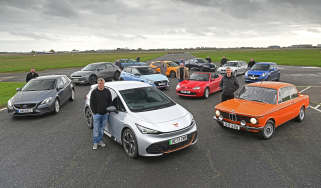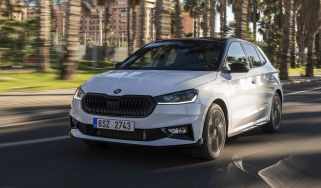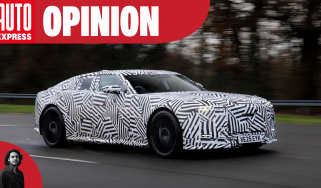Volkswagen Polo BlueGT
The VW Polo's clever engine tech has some lofty ambitions to fulfil
Breaking new ground is always a challenge, but this new 1.4-litre ACT engine is a perfect partner for the relaxed and comfortable Polo. The accessible performance and temptingly low CO2 emissions make it a more affordable and cultured everyday choice than the majority of warm superminis. However, rivals such as the Citroen DS3 and MINI Cooper D are more fun to drive and cheaper to buy.
It's been more than a year since the Polo BlueGT was revealed as a technological showcase at the 2012 Geneva Motor Show. It was the first Volkswagen model to use a new type of fuel-saving technology that promised to provide petrol engines with big gains in fuel efficiency and GTI-rivalling performance.
In other words, the Polo BlueGT could be the hot hatch of the future, by delivering lower CO2 emissions than ever but without any sacrifices to driver involvement or speed.
For such a landmark arrival, this Polo is still easy to overlook. The suspension has been dropped by 15mm to give it a lower and meaner stance, and the standard 17-inch anthracite alloys fill the arches nicely, but it fails to grab your attention like the Ibiza FR.
A gloss black grille and GT badges front and rear help to distinguish it from the rest of the range, while a curious mix of parts from the GTI (roof spoiler and rear diffuser) and BlueMotion (side sills) rounds off the visual changes. If you prefer a hot hatch that slips under the radar, this BlueGT is definitely for you – but we feel the design would have benefited from a little more aggression.
Used - available now
Inside, the VW still leads the way, and the tweaks made to the cabin further enhance the high-quality feel of the standard car. Heavily bolstered sports seats offer plenty of support, while the chunky, contoured sports steering wheel is beautifully made and our test car also had the £865 Alcantara seats with blue inserts wrapped in luxurious perforated leather. The upright centre console now comes finished in gloss black and the controls are simple to use.
Climb into the back and there’s noticeably more headroom for passengers than in the Ibiza – although fitting five adults into either model is something of a squeeze.
Most petrol vs diesel shoot-outs are a toss up between the greater efficiency of the diesel and the cheaper list price of the petrol car, but in this test the reverse is true. On paper, the BlueGT is more efficient than the SEAT, yet it’s also more expensive to buy, at £18,020.
To achieve the impressive headline figure of only 107g/km of CO2, the 1.4-litre turbo uses active cylinder technology (ACT) to shut off half the engine under certain conditions.
The switch between two and four-cylinder modes happens almost imperceptibly, but the driver is alerted to the change by a display between the dials and a subtle alteration in exhaust note from a thrum to a gentle chirp.
At steady speeds on the motorway, this is supposed to help significantly reduce fuel consumption, but push the throttle and all four cylinders will fire to summon a decent 138bhp – and with a Polo GTI-equalling torque output of 250Nm, the newcomer feels fast.
The BlueGT was more than a second quicker than the SEAT in fourth, fifth and sixth gear, and the engine is so flexible that you rarely need to change down to overtake.
However, even with the bigger alloys and lowered suspension, the Polo still feels quite soft compared to the Ibiza, and it glides over bumps that the SEAT crashes into. The extra refinement of the TSI engine means the VW is deceptively fast on the road – but the cabin is so hushed that the car fails to excite in the same way as a more raucous hot hatch does.
It leans into corners more than the Ibiza, while its controls lack the feedback you expect in a hot hatch. That makes it capable, rather than exciting to drive.
The other issue is that, despite the clever new engine technology, the Polo lagged behind the SEAT at the pumps, returning a distinctly average 36.8mpg in our hands. This means the VW will cost you more in fuel over the course of a year, even though petrol is cheaper per litre. And it will set you back £805 more than the £17,215 FR to buy.
The upside is that lower emissions mean the Polo is the cheaper option for company buyers and strong residuals and low servicing costs make it an enticing ownership prospect.






